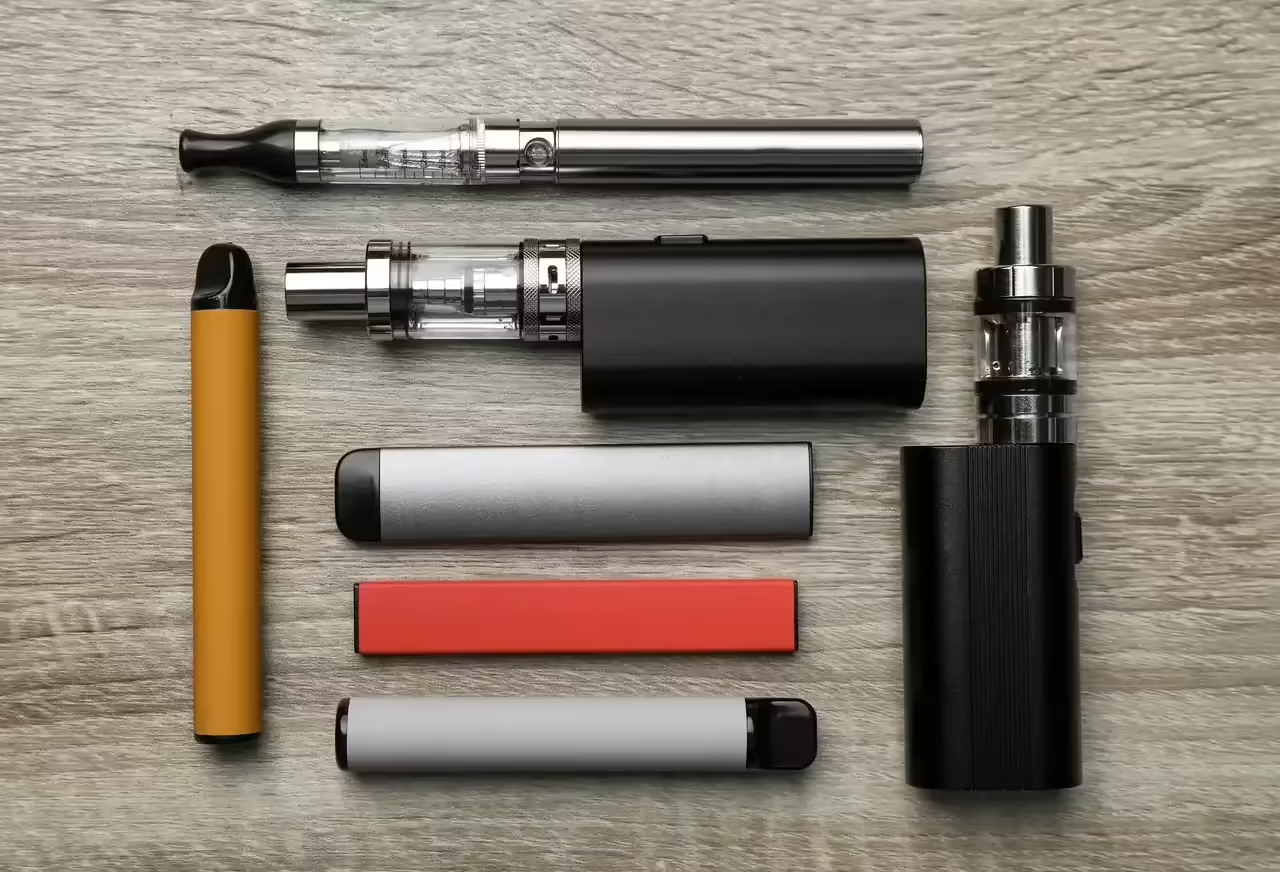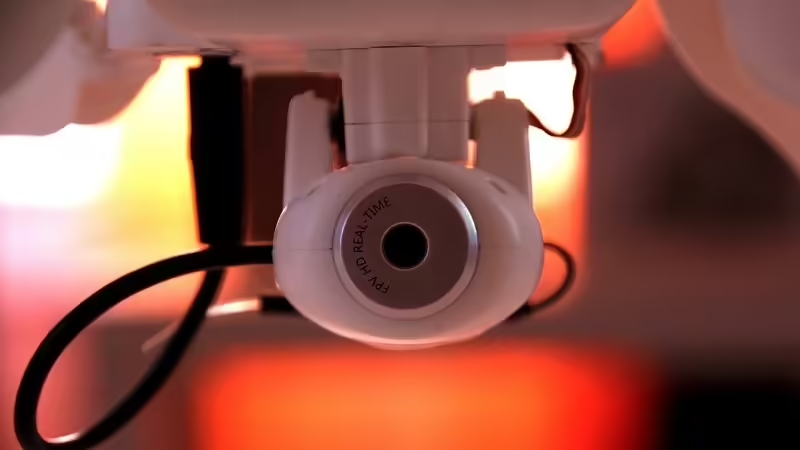
An electronic cigarette, often abbreviated as e-cigarette or vape, is a battery-powered device designed to simulate the act of smoking by producing an aerosol, commonly referred to as vapor, that is inhaled by the user. Unlike traditional cigarettes, e-cigarettes do not burn tobacco. Instead, they work by heating a liquid solution, called e-liquid or vape juice, which typically contains nicotine, flavorings, and other chemicals. This process produces a vapor that is inhaled and exhaled, mimicking the sensation of smoking without the harmful effects of burning tobacco.
Origin and Evolution of Vaping
The concept of the electronic cigarette dates back to the early 20th century, with various inventors and patents related to smokeless non-tobacco cigarettes. However, it wasn’t until the early 21st century that e-cigarettes as we know them today began to take shape.
Early Prototypes
In 2003, a Chinese pharmacist named Hon Lik developed the first commercially successful electronic cigarette. Motivated by his own desire to quit smoking, Lik’s invention used a battery to heat a nicotine solution into vapor. This groundbreaking device laid the foundation for the modern e-cigarette industry.
Global Spread and Innovation
E-cigarettes rapidly gained popularity in the 2000s, initially in China and later around the world. Manufacturers started to develop various designs, including cig-a-likes (resembling traditional cigarettes), vape pens, and advanced mods. The availability of different flavors and nicotine strengths further expanded the appeal of vaping.
Regulation and Controversy
The rapid rise of vaping also brought about regulatory challenges and controversies. Concerns emerged about the safety of e-cigarettes, particularly regarding the potential health risks and their appeal to youth. Governments and health organizations began to address these issues through legislation and public health campaigns.
Ongoing Developments
As of the knowledge cutoff date in September 2021, the vaping industry continued to evolve. Innovations in technology and product design, as well as ongoing research into the health effects of vaping, shaped the landscape of electronic cigarettes.
Benefits of Vaping Compared to Smoking
Reduced Exposure to Harmful Chemicals
One of the primary advantages of vaping over smoking is the reduced exposure to harmful chemicals found in tobacco smoke. Traditional cigarettes produce tar and release thousands of toxic substances, including carcinogens, which can lead to severe health issues like cancer, heart disease, and respiratory problems. In contrast, e-cigarettes heat a liquid solution (e-liquid) that typically contains nicotine but lacks tobacco and the majority of harmful chemicals found in combustible tobacco.
Reduced Secondhand Smoke Exposure
Vaping also reduces the risks associated with secondhand smoke. E-cigarettes produce aerosol, commonly referred to as vapor, which dissipates more rapidly than the smoke from traditional cigarettes. This makes vaping a potentially safer option for individuals in close proximity to smokers.
Variety of Flavors and Nicotine Levels
Electronic cigarettes offer a wide range of flavors and nicotine concentrations in e-liquids, allowing users to customize their vaping experience. This variety can make it easier for smokers to transition away from traditional cigarettes and potentially reduce nicotine intake over time, addressing one of the primary addiction components of smoking.
Risks and Side Effects of E-Cigarette Use
Health Risks of Nicotine
While e-cigarettes eliminate many of the harmful chemicals found in traditional tobacco smoke, they still deliver nicotine, which is an addictive substance. Nicotine can have adverse effects on cardiovascular health, increase blood pressure, and contribute to addiction, especially among young people.
Unknown Long-Term Health Effects
The long-term health effects of vaping remain a subject of ongoing research and concern. Limited data are available on the potential risks associated with inhaling vaporized chemicals over an extended period. Studies are being conducted to better understand the implications of vaping on lung health, cardiovascular health, and other aspects of well-being.
Youth Vaping Epidemic
A significant concern is the widespread use of e-cigarettes among youth and adolescents. The appealing flavors and marketing strategies have attracted a new generation to vaping, raising concerns about nicotine addiction and potential health impacts during critical stages of development.
Quality Control and Product Safety
The lack of standardized regulation and quality control in the e-cigarette industry poses additional risks. Poorly manufactured or counterfeit products can lead to safety issues, including battery explosions and the potential inhalation of harmful substances.
Components of a Vape
An electronic cigarette typically consists of the following key components:
Battery: The battery is the power source of the vape and provides energy to heat the e-liquid and create vapor. Vape batteries come in various shapes and sizes, ranging from small, built-in batteries in pod systems to larger, removable batteries in advanced mods.
Atomizer: The atomizer is the heating element of the vape responsible for turning the e-liquid into vapor. It consists of several parts, including a coil, a wick, and a housing. The coil is a wire that heats up when the battery is activated, and the wick absorbs the e-liquid, ensuring that it reaches the coil to be vaporized.
Cartridge or Tank: The cartridge (also known as a pod) or tank is the container that holds the e-liquid. Cartridges are more commonly used in pod systems, while tanks are found in more advanced vaping devices. They come in different capacities, allowing users to choose the amount of e-liquid they carry.
Mouthpiece: The mouthpiece is the part of the vape that users inhale from. It is typically located at the top of the cartridge or tank and is designed for comfort and ease of use.
Airflow Control: Many vapes have an adjustable airflow control mechanism that allows users to customize the draw resistance and the amount of air mixed with vapor when inhaling.
Functions of the Battery, Atomizer, and Cartridges
Battery: Powering the Device
The battery provides electrical power to the atomizer, heating the coil.
It activates the atomizer when the user inhales (in the case of automatic batteries) or when a button is pressed (in the case of manual batteries).
Batteries come with various features, such as variable voltage or wattage settings, which allow users to control the intensity of the vape.
Atomizer: Vapor Production
The coil inside the atomizer heats up when the battery is activated, vaporizing the e-liquid.
The wick, typically made of cotton or another absorbent material, draws e-liquid from the cartridge or tank to ensure consistent vapor production.
The atomizer is the central component responsible for creating the vapor that users inhale.
Cartridge or Tank: E-Liquid Storage
Cartridges and tanks hold the e-liquid securely and prevent leaks.
They allow users to choose their preferred e-liquid flavors and nicotine concentrations.
Some tanks are rebuildable, meaning users can replace the coil and wick, while others have pre-made coil heads that can be swapped out.
Understanding how these components work together is essential for a safe and enjoyable vaping experience. Proper maintenance and care of these parts can extend the lifespan of your electronic cigarette and ensure a satisfying vaping experience.
Types of Electronic Cigarettes: Exploring Starter Vapes, Advanced Mods, and Disposable E-Cigarettes
The world of electronic cigarettes (e-cigarettes or vapes) offers a diverse range of options to cater to different vaping preferences and experiences. Next, we will explore the three main categories of electronic cigarettes: Starter Vapes, Advanced Mods, and Disposable E-Cigarettes, helping you understand the distinctions between each type.
Starter Vapes
Starter vapes are designed with simplicity and user-friendliness in mind. They are ideal for those new to vaping or those who prefer a hassle-free experience.
Key Features:
Ease of Use: Starter vapes are typically “plug-and-play.” Users simply charge the battery, fill the cartridge or pod with e-liquid, and start vaping.
Compact Design: These devices are often small and portable, making them convenient for on-the-go use.
Limited Customization: Starter vapes offer basic features, with minimal options for adjusting settings like wattage or voltage.
Pre-Filled Cartridges: Some starter vapes use pre-filled cartridges or pods, which are convenient but may have fewer flavor options.
User Profile:
New vapers looking for a simple way to transition from smoking.
Those who prefer a no-fuss, straightforward vaping experience.
Advanced Mods
Advanced mods, short for modifications, are more powerful and customizable vaping devices. They are favored by experienced vapers who enjoy fine-tuning their vaping experience.
Key Features:
High Customization: Advanced mods allow users to adjust settings like wattage, temperature, and airflow to achieve their preferred vaping experience.
Sub-Ohm Vaping: Many advanced mods are capable of sub-ohm vaping, which produces large vapor clouds and intense flavor.
External Batteries: Some mods use external rechargeable batteries, allowing for longer vaping sessions and easy battery replacement.
Wide Range of Tanks: Users can choose from a variety of tanks and atomizers to pair with their mod, depending on their preferences.
User Profile:
Enthusiasts who enjoy exploring different vaping settings and options.
Those interested in cloud chasing or intense flavor production.
Vapers who prefer a long-lasting and customizable device.
Disposable E-Cigarettes
Disposable e-cigarettes are single-use vaping devices that come pre-filled with e-liquid. They are designed for convenience and are often used as a discreet alternative to traditional smoking.
Key Features:
No Maintenance: Disposable e-cigarettes require no charging, refilling, or maintenance.
Compact and Portable: These devices are extremely portable and discreet, resembling traditional cigarettes in size and appearance.
Pre-Filled and Pre-Charged: They are ready to use out of the box and can be discarded once the e-liquid is depleted.
User Profile:
Smokers looking to try vaping without committing to a reusable device.
Travelers or individuals seeking a portable and low-maintenance vaping option.
Those who want a convenient and discreet nicotine delivery method.
Understanding the different types of electronic cigarettes can help individuals make informed choices based on their vaping experience, preferences, and goals. Whether you’re looking for simplicity, customization, or convenience, there’s likely a vaping device that suits your needs.
Composition of E-Liquids
E-liquids typically consist of the following components:
Propylene Glycol (PG): Propylene Glycol is a colorless, flavorless liquid commonly used as a base in e-liquids. It is known for producing a throat hit similar to that of tobacco smoke.
Vegetable Glycerin (VG): Vegetable Glycerin is another common base in e-liquids. It is thicker than propylene glycol and is used to produce vapor. The PG and VG ratio varies depending on user preference and the type of vaping device.
Nicotine: E-liquids can contain nicotine in varying concentrations, ranging from high levels to nicotine-free (0 mg). Nicotine is an addictive stimulant found in tobacco and is one of the most controversial components of e-liquids.
Flavors and Flavorings: E-liquids often contain a variety of flavors and flavorings to make vaping more enjoyable. Flavors range from fruits and mints to desserts and beverages. The wide array of flavors has generated controversy due to their appeal to young people.
Nicotine and Nicotine-Free Options
Nicotine is a prominent component of e-liquids and may be a primary reason people choose to vape. Nicotine options in e-liquids vary, including:
High Nicotine Content: Up to 50 mg/ml for regular cigarette users seeking a similar experience.
Moderate Nicotine: Between 3 and 12 mg/ml, suitable for those looking to gradually reduce nicotine intake.
Low or Nicotine-Free: 0 mg/ml, intended for those who wish to enjoy vaping without nicotine and solely flavors.
Nicotine-free options can be beneficial for those who want to enjoy the flavors and experience of vaping without nicotine addiction or for individuals seeking to quit smoking.
Available Flavors and the Controversy
Flavors are a fundamental part of the vaping experience, attracting a wide range of users. However, flavors have also sparked controversy, especially due to their appeal to young people.
Youth Appeal: Sweet and fruity flavors have been associated with an increase in e-cigarette use among teenagers, leading to calls to restrict available flavors.
Regulation: Various countries and regions have implemented or proposed restrictions on e-liquid flavors to address concerns about youth addiction.







